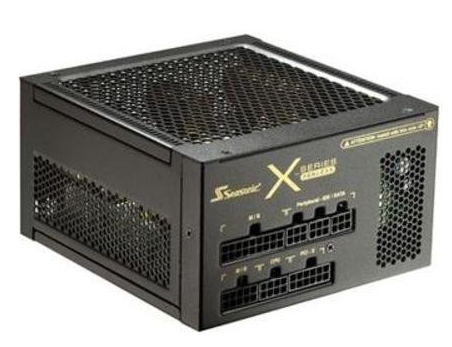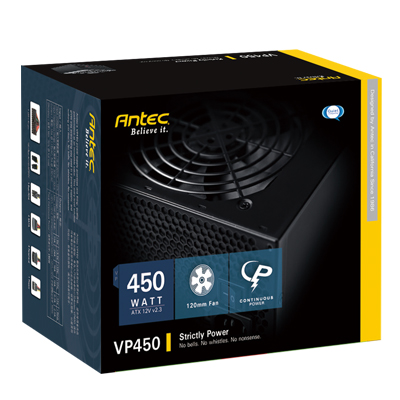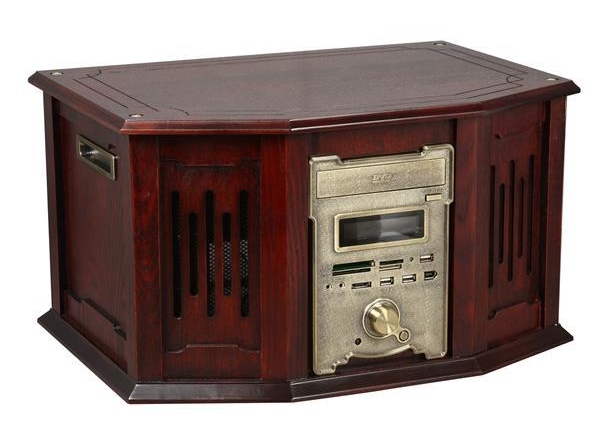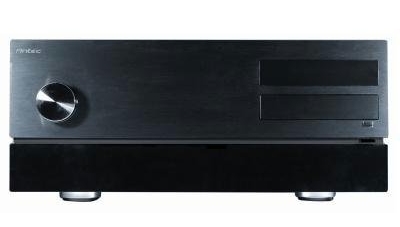AMD Llano HTPC Builders Guide
by Ganesh T S on June 5, 2012 8:02 AM ESTUnless your HTPC is going to double up as a full-blown gaming rig, it is not necessary to go in for more than a 450W power supply, and you can certainly go for less. Users concerned with noise might want to buy a fanless model, although, with 65W and 100W processors that may simply result in your CPU fan being noisier CPU fan.

- SeaSonic X series SS-400FL 400W 80PLUS GOLD PSU: Coming in at $130, the PSU is a bit costly but that is the price you'll have to pay for silence. It also comes with fully modular cables, which can be helpful when you're building in a smaller mini-ITX or micro-ATX chassis.
- Antec VP-450 450W PSU: At $38, this is a no-frills PSU with only moderate (up to 75%) efficiency, but for budget users with low-power rigs it represents a decent value. At this price, one can't expect modular cables and other such niceties. The goal here is decent reliability, low noise, and low cost.

The choice of the chassis depends on the form factor of the chosen motherboard, as well as the usage scenario.
- mini-ITX: SilverStone's FT03 Mini is currently on Newegg for $132.99 and also on Amazon for $129.50 (but temporarily out of stock at the time of this article going live). Dustin liked the case a lot and even considered it worthy of an award. The design also makes it stand out (hopefully in a good way, though opinions vary) in a home theater setup.

- micro-ATX and ATX: I am going to take this opportunity to suggest nMEDIAPC's wooden case currently available on Newegg for $90. This unique case is bound to steal the show even in the most fancy of home theater setups, thanks to its unique construction and industrial design. If you are in search of something mainstream that also includes a MCE remote, the Antec Fusion VERIS Remote Max is an excellent choice I can recommend from personal experience. It is currently on Amazon at $214.












76 Comments
View All Comments
iTzSnypah - Tuesday, June 5, 2012 - link
I didn't like how you flipped the point of the article. You start off by stating AMD APU's make good budget HTPC's. However then you recommend a $130 Seasonic PSU that is 80+ gold. For $70 you can buy a Rosewill Capstone PSU that is also 80+ gold. Building with these expensive components makes building on AMD silly, even for HTPC.ganeshts - Tuesday, June 5, 2012 - link
I also recommended a $38 Antec PSU.Note that the everything other than the mobo and the APU itself can be used for a build further down (maybe the budget builder wants to move on to a premium HTPC). I always suggest picking components which will serve their purpose for at least two or three builds / upgrades.
edge929 - Tuesday, June 5, 2012 - link
Trinity is just around the corner so unless you're not planning to game, it's better to wait. Trinity should also drop the prices on Llano chips if you can wait ~1 month.silverblue - Tuesday, June 5, 2012 - link
Trinity has reportedly been delayed until September (if you believe semiaccurate.com, that is)...randinspace - Tuesday, June 5, 2012 - link
I use mine for writing novels that never make me any money since it's the only "desktop" PC I have or frankly even need ATM :PFor those who haven't tried it, you can write a novel on just about anything that uses a real keyboard (ex: docked ASUS Transformer, iPad with bluetooth keyboard, that 7 year old Centrino laptop you bought with your student loan...) these days as long as you stick with it, but productivity tends to suffer more when your biggest potential distraction changes from a game of FreeCell to an entire TV series at your fingertips.
Back on topic: great article Ganesh. Having lived in a metaphorical cave for 5 straight years (aforementioned Centrino laptop, which in its defense at least has a better looking if not higher resolution LCD than a lot of stuff on the market these days) I hardly even knew what I was missing out on until I stumbled upon one of your HTPC guides.
jeffkro - Tuesday, June 5, 2012 - link
I have the 100W llano HTPC and a really recomend sticking with the 65W. The stock fan for the 100W is pretty loud even when the mobo lowers the speed.ashvagan - Tuesday, June 5, 2012 - link
Would you review the low budget ones and see if they can run the usual 720p stuff just fine? Which ones are recommended really?ganeshts - Tuesday, June 5, 2012 - link
Zacate is OK for 720p / 1080p24 stuff. But, it struggles with deinterlacing (even for SD content):http://www.anandtech.com/show/5738/zotac-zbox-nano...
I wouldn't advise Zacate for media PC (except if usecase is something like a hotel setup where the type of content being played back is known beforehand -- say, always 1080p24 H.264 with compliant profile or something like that).. As I mentioned in the concluding remarks, Zacate is more efficient for use in headless setups (i.e, running as a media server or storage server platform, where low power is useful). Unfortunately, the GPU prowess of the Zacate is just not needed there.
wiyosaya - Tuesday, June 5, 2012 - link
As an activity that I would like to do would be recording HDMI to some medium, in particular, Blu-ray or hard-disk.There are several HDMI capture cards on the market that would allow recording from HDMI sources such as satellite or cable set-top boxes, or other playback devices such as Blu-ray players.
If the content protection bit is not set by the content provider, this should be easily accomplished.
I see such recording falling under "fair use" rules when it is for personal use, i.e., viewing in your own home for not-for-profit uses.
Such capability is one big hole in the market, IMHO, and there is no sign that stand-alone Blu-ray recorders will ever come to market, and those very few from JVC that are already available do not have HDMI inputs.
Casper42 - Tuesday, June 5, 2012 - link
Why would you want to drink from a fire hose?HDMI is a display protocol and as such is very high bandwidth.
Cable, Sat and even Blu-Ray have much lower bandwidth requirements before decoding.
Why wouldn't you instead want to find a solution to convert/capture the incoming stream rather than the outgoing display?
ATI cracked open the door to M Card powered Cable tuning and Silicon Dust is fairly well received as well.
Blu Rays can be easily ripped now a days, and finding mass market movies WITHOUT the Content Protection enabled is like looking for a needle in a haystack.